#John Sell Cotman
Explore tagged Tumblr posts
Text
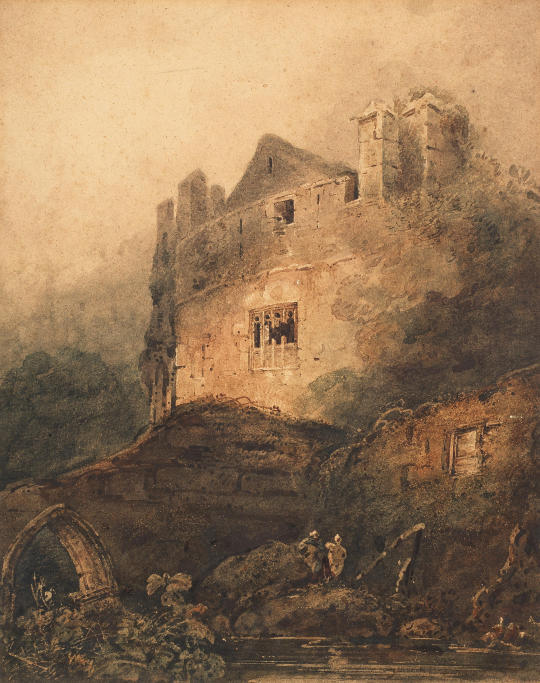
Chepstow Castle, John Sell Cotman
147 notes
·
View notes
Text

Porch of the Free School, Thetford, Suffolk
Artist: John Sell Cotman (English | British, 1782-1842)
Date: 1818
Medium: Graphite and sepia wash on paper
11 notes
·
View notes
Photo

Fisherman's cottage, Thorpe; side view of a ramshackle house, a fisherman at the doorway about to descend steps to a track which passes the cottage, a line of fish hang near a window. by John Sell Cotman
125 notes
·
View notes
Photo

Castle Acre Priory, Norfolk by John Sell Cotman
5 notes
·
View notes
Text

Waterfall in a Desolate Landscape
By John Sell Cotman
#art#painting#fine art#classical art#british art#british painter#landscape#waterfall#british artist#nature#watercolor art#watercolor#european art
51 notes
·
View notes
Text

West Window of Snettisham Church, Norfolk - John Sell Cotman // An October Day - Frank Knox Martin Rehn // Never Let Me Go - Florence + the Machine
version two
#gothic art#gothic architecture#stained glass#gothic church#never let me go#ceremonials#florence + the machine#florence and the machine#fatm#art#art history#lyrics#lyric art
109 notes
·
View notes
Text
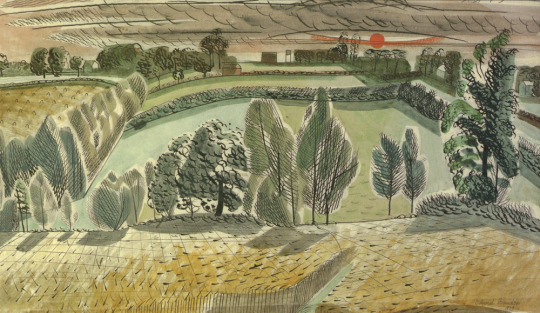
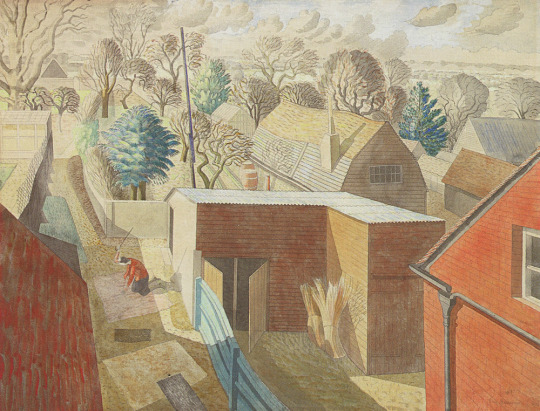
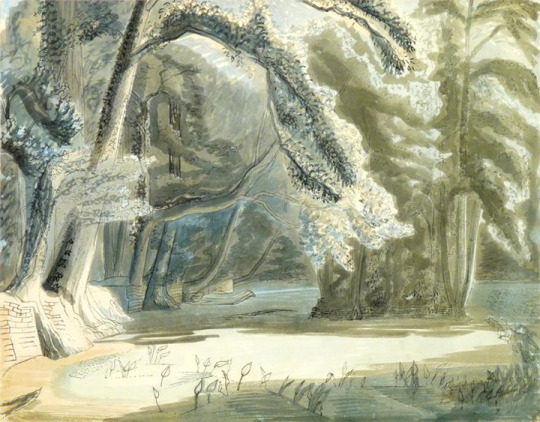
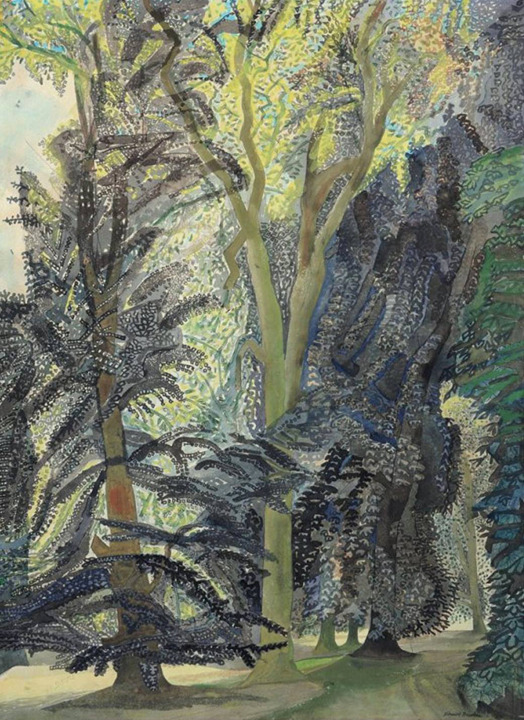
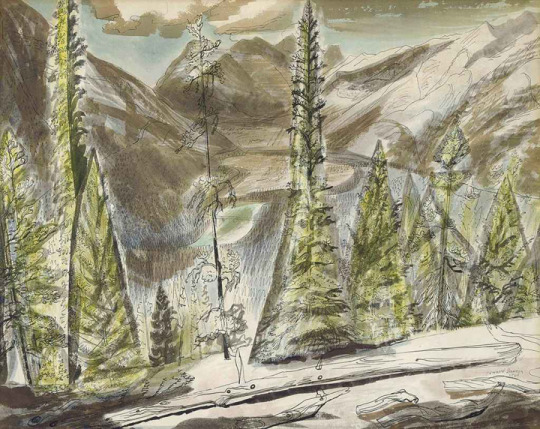
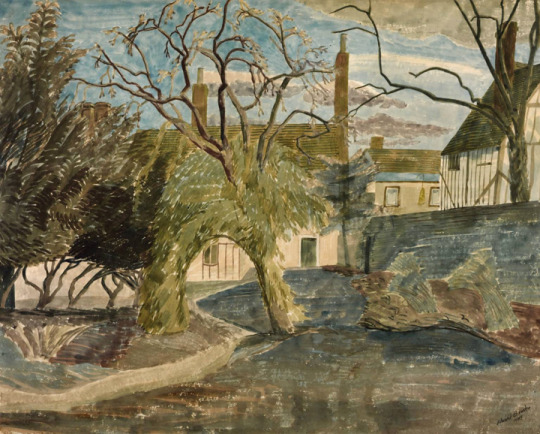

Watercolours by Edward Bawden (1903 – 1989, British).
"Edward Bawden (1903-1989) thought of himself as a designer, not an artist. A respected British book illustrator and printmaker, his commercial designs for clients including Fortnum & Mason and Shell, are rightly prized as classics. But as the Dulwich Picture Gallery in London argues, his fine art has been unfairly neglected. The gallery’s new exhibition, which features his paintings alongside his book illustrations, posters and graphic designs, ought to change that. The most comprehensive exhibition since his death, it argues that Bawden reinvented the watercolour for the 20th century.
Bawden is best known for his witty approach to linocut, a printing technique similar to woodcut, which he elevated into a respected medium. But as the exhibition reveals, Bawden was fascinated by watercolour. While he was at the Royal College of Art (rca), Bawden, his friend and fellow art student, Eric Ravilious, and their tutor, Paul Nash, rediscovered the British watercolourists of the late 18th and early 19th centuries. At the time – this was the 1920s – the restrained style of artists like Francis Towne and John Sell Cotman seemed refreshingly modern after decades of “blob” and “swash”, one critic’s disparaging terms for the loose style that grew out of Impressionism. In their own work, Bawden and his circle began to combine clean lines and precisely applied colour with stencilling and collage, and to borrow techniques from oil painting such as stippling, where the canvas is dotted with many small specks. In their hands, watercolour drawing went from fusty to fresh."
By Florence Hallett https://www.economist.com/.../how-edward-bawden...
32 notes
·
View notes
Text

John Sell Cotman (1782–1842), The South Door, All Saints, Kirby Cane, Norfolk, c. 1806
Watercolour and pencil on paper 9 ½ × 7 ½ inches · 239 × 190 mm
7 notes
·
View notes
Text

Llanthony Abbey
John Sell Cotman, 1801
2 notes
·
View notes
Text

John Sell Cotman (1782-1842). 1828 r
2 notes
·
View notes
Text
Artist research:
Thursday 25th January,

LSAD library:
1. John Sell Cotman (1782-1842)
-He was an English landscape painter and etcher. He painted "Study of Sea and Gulls" (1832).
- I loved the colour of the blue when I came across this page, it draws you in on the mysterious and beautiful view.
2. Francis Danby (1793-1861)
-He was an Irish painter, the painting was called "The Frame at Stapleton, Bristol" (1823).
-I was looking through the book of Irish art and thought this painting is calming to look at, nice scenery!
3. William Orpen (1878-1931)
-He was an Irish portrait artist based in London. The painting is called "A Summer Afternoon" (1910).
-A hillside view with his wife. Very peaceful and beautiful with the sea and sky background.
5 notes
·
View notes
Text

St. Luke's Chapel, Norwich Cathedral (1808)
Artist: John Sell Cotman
1 note
·
View note
Text

Fisherman's Cottage, Norfolk
by: John Sell Cotman
1782-1842
british museum 1902,0514.129
0 notes
Text

S2E8: DIY Art School Part 5 (Workspace and Equipment)
• To understand the basics (perspective, anatomy, cross contours, rendering, etc.) all the equipment you need is a pencil, paper, and an eraser. Or a basic drawing tablet with basic drawing software. ↳ Even if you want to be a painter, it's much easier to learn the fundamentals with a pencil and not paint.
• You don't need all the tools you see experts using. ↳ Just because you see a race car driving riding around in a $500,000 car, it doesn't mean they learned to drive in it.
• Even if you're a filmmaker, you can get started by standing up in front of a group of people and trying to entertain them. It only costs as much as the clothes you're wearing. You don't need fancy equipment to learn storytelling.
• Painting can be expensive. You can start with a wash, walnut ink, watercolor or something cheap. You can learn a lot about lights and darks, being comfortable with a brush, etc without spending a ton of money. Even using just white and burnt umber which are cheap colors.
• Some limitations make you more creative and you learn to adapt. One of Marshall's students didn't have a car and took the bus everyday. He brought his sketchbook, drew people, and became a great observer.
• The library is a great place to get work done.
Mentioned: • John Sell Cotman • Stevie Ray Vaughan: Legends • Hollywoodism: Jews, Movies, and the American Dream • Transformational Leadership: How Leaders Change Teams, Companies, and Organizations (Michael Roberto, The Great Courses)
1 note
·
View note
Text

John Sell Cotman. Waterfall in Desolate Landscape In Rokeby Park Ca. 1800-1810 Watercolor
73 notes
·
View notes
